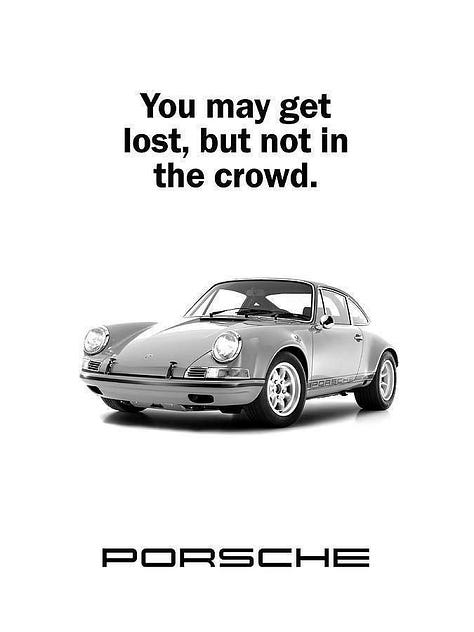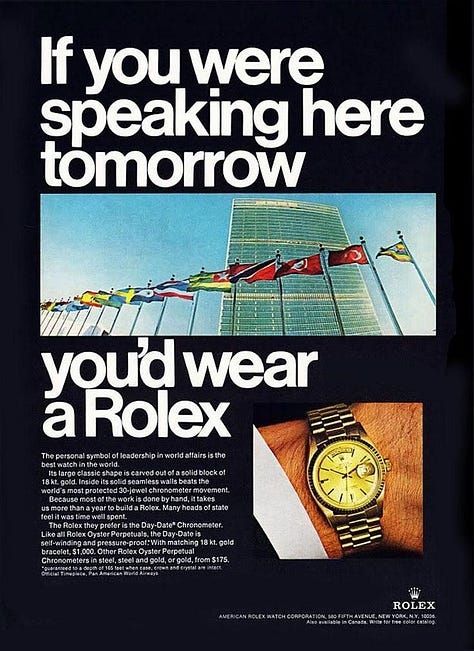Dear readers,
First of all congrats for reading a whole newsletter. Oxford University Press named brain rot phrase of the year. Huge win for me, a Chronically Online™ person.
Brain rot is defined as the supposed deterioration of a person's mental or intellectual state, especially viewed as the result of overconsumption of material considered to be trivial or unchallenging,
The first recorded use of brain rot dates much before the creation of the internet - it was written down in 1854 by Henry David Thoreau in his book Walden. He criticises society's tendency to devalue complex ideas and how this is part of a general decline in mental and intellectual effort. It leads him to ask: "While England endeavours to cure the potato rot, will not any endeavour to cure the brain-rot – which prevails so much more widely and fatally?"
We’ll see very very soon how that pertains to our subject du jour.
But first! a little survey re: the future of this newsletter.
Live, Laugh, Internet,
Esther
PS: French readers, the other newsletter I edit is still running its Cyber Monday sale until midnight. Use code BF2024.
💰 What I’m investing in
🔡 Good copy. If you hate the brain rot phenomenon I shared above, you’re not alone. I know it’ll give fodder for older generations to say something along the lines of “things used to be better.”1 But were they?
—
I keep up with AI news and breakthroughs for my 9-5 and regularly use it for work. I stand firmly in the “used correctly, this technology can be Good For Us” camp. Here’s one of the issues I see at the moment: used with little discernment, it serves the opposite purpose as what it’s intended for. Every day, my LinkedIn feed is inundated with lengthy posts adding little to no value to the reader. Even worse, there are now several tools on the market helping users write these posts with very little input from the “author.” If every LinkedIn user is a “writer,” who gets to be a writer?
—
This reminds me of my past life as a copywriter at an agency. See, I’ve spent the majority of my career crafting words and messaging in various capacities. The creative ⇔ agency ⇔ client triangle is a whole other beast than the creative ⇔ brand relationship that exists when you work in-house. When creatives present their work to the client, the latter sure has a lot of opinions. On the concept, on the copy, and on the design. Comments on design often range from “make the logo bigger” to “change the colour” to “I don’t like it.” Annoying for obvious reasons but because design has a higher barrier of entry, the client usually doesn’t redesign the proposal. However. Because everyone knows how to assemble words to string a sentence, the client frequently fancies themselves a writer. That clever wordplay you used? F that. Adhering to a brand dictionary and guidelines? Oh, but these don’t apply to the client :)
I’m not trying to gatekeep copy. I’m merely saying that hiring someone with experience and/or knowledge in a field will probably produce results with a higher ROI. Whatever the intended use: a print ad, an online post, or the name of a product. A writer will see and correct glaring issues with a piece of content, be it written by AI or by a clueless client. Beyond writing, this applies to many many fields—I personally prefer to get my car serviced or my teeth cleaned by a professional. We’ve gotten too used to the founder turned motivational speaker or the influencer turned one-woman creative agency.



A few Oblique Forecasting rules for writing when you don’t have a professional on call:
Use Real Words™. I need to come up with a dictionary of words to avoid. This goes back to my argument that known>new (I don’t cosign, I’m an observer). The issue is this: if we willingly keep reusing the same phrases over and over and then feeding LLMs with that same content, we’re spiralling towards a smaller vocabulary and increasingly smaller ideas. Some verboten phrases: the X of Y (e.g. the Uber of dating, the Tinder of astrology), the intersection (e.g. we’re a creative practice at the intersection of tech and beauty), biohacking, disruptive. These are some startup clichés but this reminds me of a memo Jane Pratt, legendary editor-in-chief, issued to her editors: employ only words you would use IRL (e.g. hair, not mane; nails, not talons).
Pour yourself a half-full glass. Whatever you’re writing about (a concept, a product, a person) has to have positive qualities. Outline them, instead of what they don’t possess, or how they compare to the competition. E.g. Oblique Forecasting contains insightful ideas. Not: Oblique Forecasting’s content is not unintelligent. Not: Oblique Forecasting is a smarter newsletter than XYZ.
What you don’t say can be as powerful as what you do say. Writing with AI almost always means deleting whole chunks of copy. Think of it as the equivalent of design’s negative space. A few carefully chosen words make a greater impact.
📈 Bullish news
Threads (owned by Meta) adds 35M new sign-ups this month [Axios]. Bluesky is still tiny compared to Threads and X.
Stock market optimism keeps rising [Axios]
See how a lab-grown diamond is made [Washington Post] While lab-grown diamonds have been around since the 1950s, they have increased in popularity in the past five years and now make up an estimated nearly 20% of the global diamond market. Read my thoughts on the subject 💎
Hair care brand Crown Affair raised a $9mm Series B [BOF] The round was led by True Beauty Ventures, which has also invested in Ami Colé, Moon Juice, and Vacation Sunscreen.
The Kardashians drink Ghia. More on the rise of nonalcoholic drinks here 🍹
Call Her Daddy’s Alex Cooper is launching a new venture: alexssupersecretproject553968 🕵️
HarperCollins reached a deal with Microsoft allowing the tech company to train its AI model using select nonfiction titles [Bloomberg]
For the first time in Hearst's 137-year history, more than 50% of its profits will come from professional products, not consumer-facing newspapers, magazines and TV stations. Hearst projects it will earn $12.8 billion in top-line revenue this year, up from $11.95 billion in 2023, making it one of the largest privately-owned media businesses in the country. [Axios]
Young Daters Square Off With Scientists Over Whether Perfume Can Turn People On [WSJ] Over the past two years, the number of people talking about pheromone perfume on social media surged nearly 300%, according to Sprout Social.
🧑⚖️ Lawful Neutral
What Will Enter the Public Domain in 2025? [publicdomainreview]
📉 Bearish news
Macy’s is delaying its earnings report after discovering that a single employee had misstated up to $154 M in delivery expenses over the past few years. [NYT]
Reddit stock fell as much as 9.6% on Friday following reports that Condé Nast parent company Advance Magazine Publishers plans to borrow against its stake in the social media platform. Bloomberg reported that Advance is offering 7.8 M shares for $145.38 to $148.54 each, valuing the sale at up to $1.2 billion—a discount of as much as 8% to Reddit’s Thursday closing price of $158.02 per share. Separately, Advance is buying derivatives on the shares, allowing it to maintain its ownership stake while creating the credit facility. [Bloomberg]
Haul culture is fuelling returns. What can brands do? A new survey of 2,000 UK households found that 69% of Gen Z admit to over-ordering with the intention of returning items—compared to just 16% of baby boomers. [Vogue Business]
US Companies have already stopped talking about DEI [Axios]. That was quick.
Mexico vows to retaliate if Trump imposes 25% tariffs [Washington Post]
Deflating Boobs, Shrinking Butts and Little Lips: The De-Kardashian-ification of America, “The filler market has been down in ’24” [Hollywood Reporter]
The Three Pillars Of The Bro-Economy [The Atlantic] “Guys are about to lose billions and billions of dollars a year on apps designed to obscure risk and keep them coming back for a dopamine hit. Trump and Musk can afford to lose huge sums. Most young American men cannot.”
A Matcha Shortage Hits Tiktok’s Favourite Brands [Eater]
Gen Z Is Breaking Up With Dating Apps [The Guardian] New research from Ofcom shows the UK’s top four dating apps — Tinder, Hinge, Bumble, and Grindr — have all seen a decline in usage since 2023. Tinder lost 600k users, Hinge lost 131k, Bumble’s users fell by 368k and Grindr lost 11k. Read Oblique Forecasting’s take on dating apps 💏
Everybody wants to be a designer; nobody wants to be a maker. Hence, “Made in Italy” is in trouble. According to a report by the Italian luxury association Altagamma and the Italian Union of Chambers of Commerce, the high-end fashion sector in Italy will need to fill 75k technical and vocational roles between 2024 and 2028 to meet demand. Based on current recruitment rates, only half of these positions are likely to be filled. Artisanal skills—and the artistry they enable—are in decline, as younger generations gravitate toward white-collar jobs like design and marketing over production roles. [Vogue Business]
This allows me to share my all-time favourite sketch: Four Yorkshiremen. “I was happier then and I had nothing.”






It's soooo easy to spot AI-written stuff if you write professionally. It's so true it uses the same words over and over!
all for gatekeeping copy, tbh